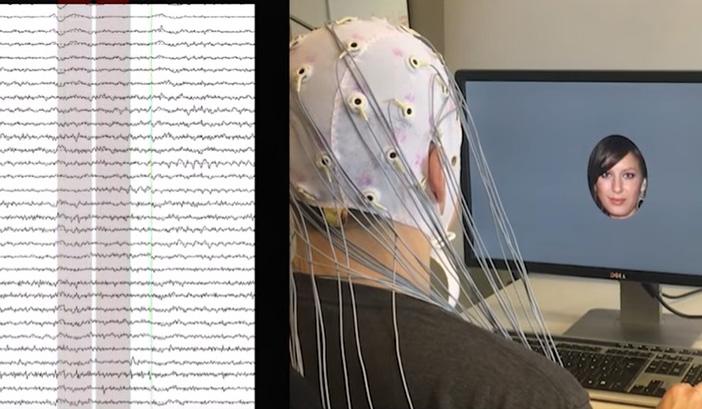Artificial intelligence reads your mind and draws the person you would be most attracted to
The computer could generate faces that participants would find attractive 80 per cent of the time

Your support helps us to tell the story
From reproductive rights to climate change to Big Tech, The Independent is on the ground when the story is developing. Whether it's investigating the financials of Elon Musk's pro-Trump PAC or producing our latest documentary, 'The A Word', which shines a light on the American women fighting for reproductive rights, we know how important it is to parse out the facts from the messaging.
At such a critical moment in US history, we need reporters on the ground. Your donation allows us to keep sending journalists to speak to both sides of the story.
The Independent is trusted by Americans across the entire political spectrum. And unlike many other quality news outlets, we choose not to lock Americans out of our reporting and analysis with paywalls. We believe quality journalism should be available to everyone, paid for by those who can afford it.
Your support makes all the difference.An artificial intelligence has been created that can generate images based on what a single person finds attractive.
Researchers at the University of Helsinki and the University of Copenhagen were investigating whether a computer could identify facial features that a person would find attractive.
Brain signals were collected from participants, and combined with a brain-computer interface that would generate the artificial matches - with the researchers comparing the user interactions to Tinder.
Like the popular dating app, users would indicate when they found a face created by the generative adversarial neural network (GAN) - although rather than swiping left or right, they would have to pay attention to the face while their brain’s response was collected by monitoring electrical signals via an electroencephalograph.
That brain-computer was then able to interpret opinion on attractiveness based on the images, and generate an entirely new face by merging data from the previous faces.
Researchers then generated new portraits for each participant in order to test whether the model worked, and found that the new images matched the preference of the subjects with an 80 per cent accuracy rating.

“The study demonstrates that we are capable of generating images that match personal preference by connecting an artificial neural network to brain responses. Succeeding in assessing attractiveness is especially significant, as this is such a poignant, psychological property of the stimuli”, says Senior Researcher and Docent Michiel Spapé from the Department of Psychology and Logopedics at the University of Helsinki.
“Computer vision has thus far been very successful at categorising images based on objective patterns. By bringing in brain responses to the mix, we show it is possible to detect and generate images based on psychological properties, like personal taste.”
The study may allow computers to learn and understand subjective preferences, which could eventually build into studying other topics such as perception and decision-making - as well as spotting stereotypes or implicit bias.
“In our previous studies, we designed models that could identify and control simple portrait features, such as hair colour and emotion. However, people largely agree on who is blond and who smiles. Attractiveness is a more challenging subject of study, as it is associated with cultural and psychological factors that likely play unconscious roles in our individual preferences”, Spapé also said.
“Indeed, we often find it very hard to explain what it is exactly that makes something, or someone, beautiful: Beauty is in the eye of the beholder.”

Join our commenting forum
Join thought-provoking conversations, follow other Independent readers and see their replies
Comments